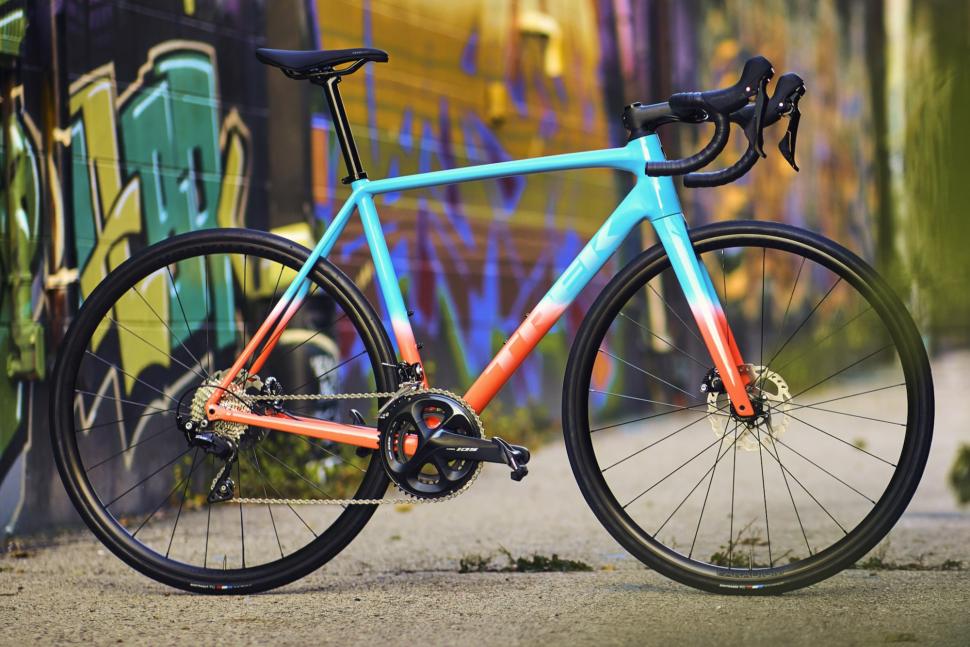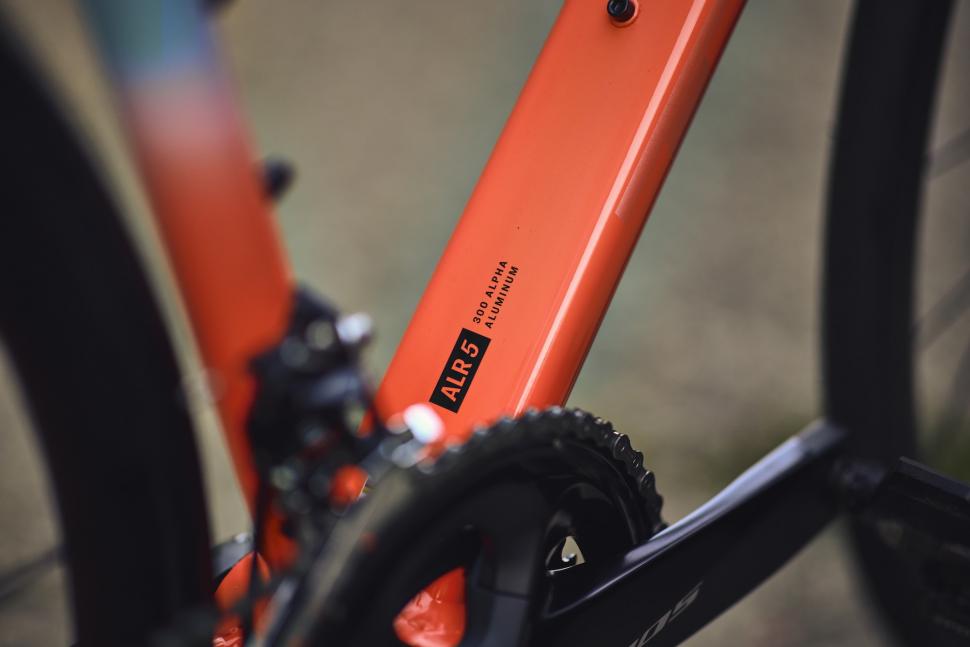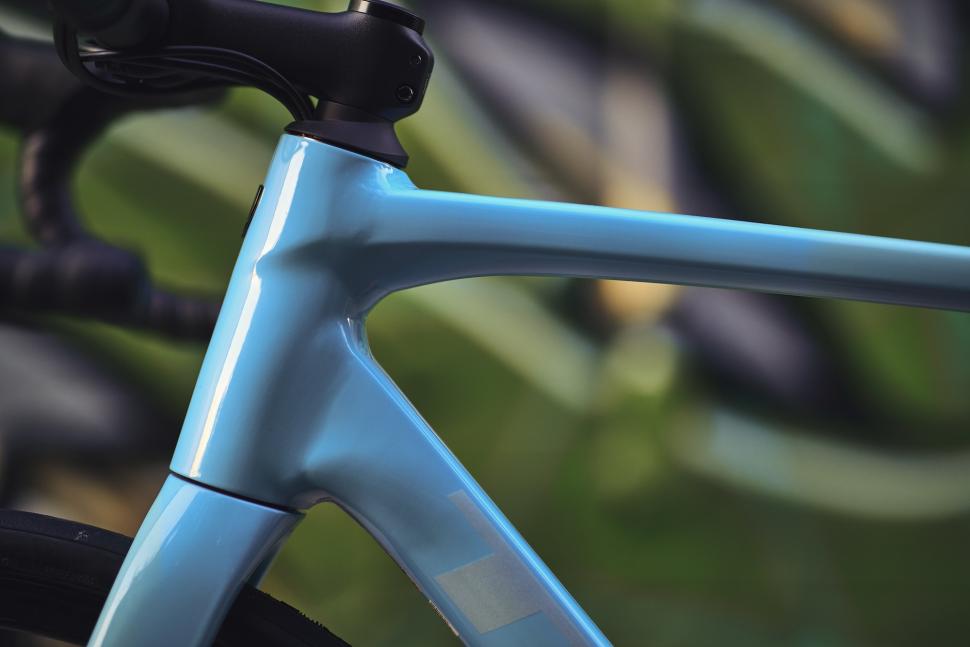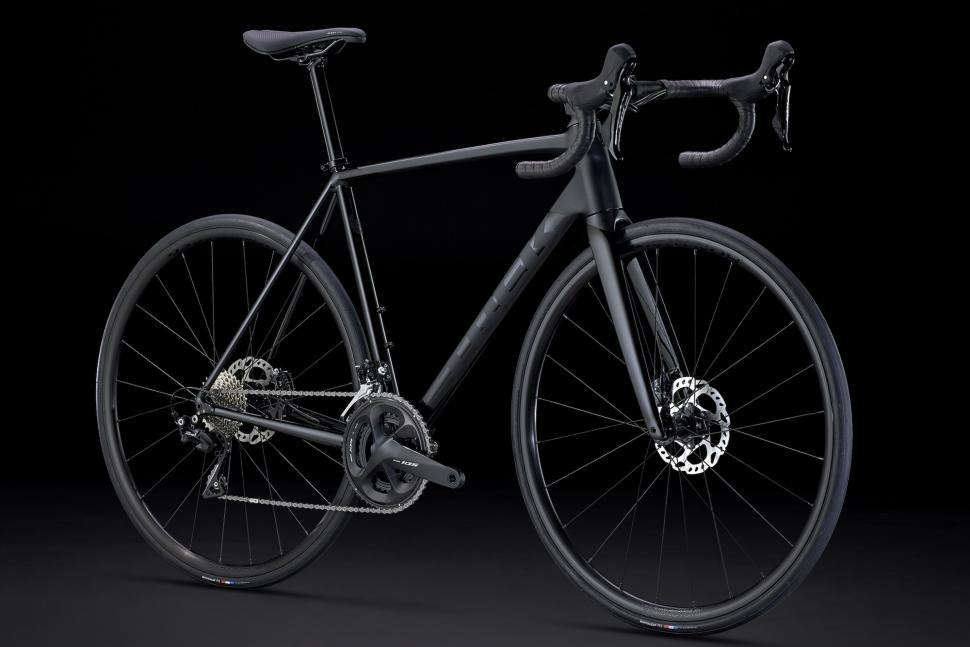- News
- Reviews
- Bikes
- Components
- Bar tape & grips
- Bottom brackets
- Brake & gear cables
- Brake & STI levers
- Brake pads & spares
- Brakes
- Cassettes & freewheels
- Chains
- Chainsets & chainrings
- Derailleurs - front
- Derailleurs - rear
- Forks
- Gear levers & shifters
- Groupsets
- Handlebars & extensions
- Headsets
- Hubs
- Inner tubes
- Pedals
- Quick releases & skewers
- Saddles
- Seatposts
- Stems
- Wheels
- Tyres
- Tubeless valves
- Accessories
- Accessories - misc
- Computer mounts
- Bags
- Bar ends
- Bike bags & cases
- Bottle cages
- Bottles
- Cameras
- Car racks
- Child seats
- Computers
- Glasses
- GPS units
- Helmets
- Lights - front
- Lights - rear
- Lights - sets
- Locks
- Mirrors
- Mudguards
- Racks
- Pumps & CO2 inflators
- Puncture kits
- Reflectives
- Smart watches
- Stands and racks
- Trailers
- Clothing
- Health, fitness and nutrition
- Tools and workshop
- Miscellaneous
- Buyers Guides
- Features
- Forum
- Recommends
- Podcast
TECH NEWS
 2023 Trek ALR 5 - 1 (1).jpeg
2023 Trek ALR 5 - 1 (1).jpegIs Trek’s new road bike really aluminium? Updated Émonda ALR features new frame with Kammtail aero tubing and fully integrated cables
Trek has released an updated version of its Émonda ALR aluminium road bike that features a new frame with Kammtail aero tubing, a revised geometry, and fully integrated cables. Oh, and there’s a threaded bottom bracket too.
“The third-generation Émonda ALR was built with incredibly light and strong Alpha Aluminium, a race-specific geometry and a completely redesigned frame that helps riders fly up climbs, across flats and through the finish line,” says Trek.
As previously, the Émonda ALR features an “ultra-light and durable” 300 Series Alpha Aluminium frame that’s made with what Trek calls Invisible Weld technology. Okay, ‘invisible’ might be pushing it but the welds are certainly inconspicuous at first glance. The ones at the bottom of the seatstays are noticeable if you go looking, as are the ones around the bottom bracket, but the head tube and seat tube junctions look almost like carbon, which is plainly the impression that Trek is shooting for.
“The Émonda ALR has evolved to include the same race-winning features as its more expensive carbon counterparts, including Kammtail aero tube shaping and integrated cables and housing that provide an aero boost over the previous model,” says Trek.
It’s the down tube that has the Kammtail shaping, broad with a squared-off back end.
One other big difference from the previous model is that there’s no port for cable routing at the top of the down tube. Instead, the gear cables and brake hoses (both new models are equipped with hydraulic disc brakes) run close to the stem before entering the frame via holes in the headset bearing cover at the top of the head tube.
The front derailleur cable, rear derailleur cable and rear brake hose all emerge just in front of the bottom bracket, the latter two ducking inside again at the bottom of the BB shell and heading for their respective components.
Trek has moved the ALR bikes from its H2 fit to H1.5. Back in ye olden dayes, Trek gave you the option of an aggressive H1 fit or a more relaxed H2 fit on its performance-focused road bikes. Now it has split the difference with H1.5 which is what you’ll find on both Madones and carbon Émondas too. Trek calls this “an optimised race-specific geometry [that] puts riders in the right position for power while minimising aero losses”.
Trek has been gradually sidelining press-fit bottom brackets and the new Émonda ALR is the latest to switch to a threaded T47 design. Some frames and press-fit BBs work together perfectly well but the move back towards threaded components will please anyone who has ever suffered squeaks and creaks.
The wheels are tubeless-compatible, but the Émonda ALR is sold with with standard inner tubes and non-tubeless-compatible tyres and rim strips. The maximum tyre size the frame and fork will take is 28mm. You don’t get mudguard mounts here.
Trek claims a weight of 1,257g for the frame (size not specified) and 406g for the fork.
Two models are available:
Trek Émonda ALR 6, £3,150
Groupset Shimano 105 Di2 R7150 12-speed
Wheels Bontrager Paradigm Comp
Claimed weight 8.80kg
Trek Émonda ALR 5, £2,325
Groupset Shimano 105 R7000 11-speed
Wheels Bontrager Paradigm SL
Claimed weight 8.80kg
Trek Émonda ALR frameset, £1,300
Find out more at www.trekbikes.com.
Mat has been in cycling media since 1996, on titles including BikeRadar, Total Bike, Total Mountain Bike, What Mountain Bike and Mountain Biking UK, and he has been editor of 220 Triathlon and Cycling Plus. Mat has been road.cc technical editor for over a decade, testing bikes, fettling the latest kit, and trying out the most up-to-the-minute clothing. He has won his category in Ironman UK 70.3 and finished on the podium in both marathons he has run. Mat is a Cambridge graduate who did a post-grad in magazine journalism, and he is a winner of the Cycling Media Award for Specialist Online Writer. Now over 50, he's riding road and gravel bikes most days for fun and fitness rather than training for competitions.
Latest Comments
- bensynnock 16 min 54 sec ago
To be fair, I know loads of people who've bought bikes on the cycle to work scheme who never had any intention of riding them to work. They all...
- redimp 35 min 45 sec ago
"I think we’ll have two mighty races to watch tomorrow…" No we won't
- maxdabrit 36 min 8 sec ago
So the shape of the footbed helps with the ability of a body to clear lactate buildup? It would seem that perhaps the Specialized's marketing team...
- mdavidford 1 hour 6 min ago
It looks like it would give you more of a sideways elliptical motion - like a cross-trainer - rather than the up-and-down of the Alenax.
- wtjs 1 hour 23 min ago
They've only got two wheels on the road, so it doesn't count as parking in the road...
- wtjs 1 hour 21 min ago
"I just lost concentration, the dog jumped on my lap"...
- slc 1 hour 54 min ago
Bristol could do with being a bit more like Liverpool, at least in the housing costs department. So I for one welcome our new square-nurse merging...
- Kendalred 2 hours 7 min ago
Personally I thought the 'Matador' celebration on the line, a celebration of a vile practice, more irksome (or 'flamboyant bow' as euphamistically...























Add new comment
16 comments
It looks so similar to my 2014 Madone 5.2.
FFS. Why are journalists so preoccupied with threaded bloody bottom brackets? It's almost as if they're being paid to say it...
Maybe it's because people reading the article might be interested.
It's a bad habit several high profile brands have got into; specifying tubeless rims and then putting non tubeless tyres on. If you wish to run tubeless then it's another £100 or so straight off, I can't imagine that it would cost a manufacturer anything to put tubeless ready tyres on from the off.
Very nice looking bike
Very tasty.
They've turned the Emonda ALR into a porker. I managed to get my 2018 rim brake ALR6 down to sub 7kg with a bit of weight weenie bling. I've still got it, still ride it and still love it.
I liked the ALR6 pro version a few years back, mec Ultegra and some nice carbon wheels, It was if I remember about 8kg all for about £2300. Is this the 2023 bike, progress??
Aero trumps weight when it comes to efficiency/performance, so if the bike is indeed aerodynamically more efficient, the answer is yes, unless you're into (very steep) hill climbing and don't care about efficiency/performance anywhere else.
Based on their username, I guess they are into hill climbing...
More seriously, isn't the Emonda meant to be Trek's light bike for hill climbing? If you want aero, surely you'd buy the Madone?
The pro had 40mm deep carbon wheels, quesion is what is better, areo frame or areo wheels? Both would be best but on these 2023 bikes they are shiped with shallow alloy wheels and areo frame??? All a bit odd and and at a price point vs spec, that only a few years ago would seem just bonkers!!!
I think they're taking the michael with those prices for ally bikes. Corporate profits seems to be the order of the day. No thanks.
Bit surprised the mechanical 105 version is that heavy. Some deliberate choices so as not to embarrass it's stablemate?
I thought I'd have a quick look to see what component differences there were and was suprised to see it might actually be worse than that - Trek's website lists the weight of the ALR5 as 9.00kg.
As far as I can tell*, 105 Di2 (R7100) is ~ 500g heavier than the mechanical 105 (R7020). Which means the other component choices are making ~700g difference!
I haven't been through all the components individually to work it out, but I am also suprised that there is such a significant difference. The components are broadly very similar - the ALR6 tends to use a marginally higher spec but still pretty much all alloy rather than carbon, including things like wheels (where big savings could be made).
*This page lists claimed weight for all Shimano groupsets and so is hopefully a fair comparison. Obviously each groupset has a number of options (different casette sizes etc.) with different weights, and sometimes claimed weights do not always match actual weights measured by reviewers! What's included in the total weight can also differ - e.g. are cables included? Bottom bracket?
Well, If you were to buy an Emonda SL5 fitted with the same 105 mechanical that bike come in at a hefty 9.1kg (https://road.cc/content/review/trek-emonda-sl-5-disc-291965) . So is Treks OCLV 500 carbon that good after all? I have an Emonda SLR which weighs in at bang on 7kg but thats made of the much lighter OCLV 800. .
I would like to see how light this could be with the right components on it. With a claimed frame weight of under 1300g sub 7kg should be achievable and then it would be a serious contender against much more expensive carbon fibre frames. Maybe even the current SLR which has got ridiculously expensive since I got mine.
Update: Looking at Treks Website, their 'official' weights are :-
Emonda SL5 - 8.87kg RRP £3.250.00
Emonda ALR5 - 9.00kg RRP £2.325.00
Or even better the ALR6 with 12sp 105 Di2 is both lighter and still cheaper than the SL5!
That really is a no brainer for anyone looking for a reasonably mid priced bike. The ALR is so much better value. Just think what it would be like with Ultegra Di2 and Bontrager Aeolus Pro wheels instead.
It's even more stark if you just look at the framesets:
Emonda SL Disc Frameset weighs 1,245g (frame) + 384g (fork) and costs £2,950 (source).
Emonda ALR Frameset weighs 1,257g (frame) + 406g (fork) and costs £1,300. (source: this article - the new ALR Frameset is not yet listed on Trek's website).
So with the SL, you're paying an extra £1,650 to shave 34g off the weight.